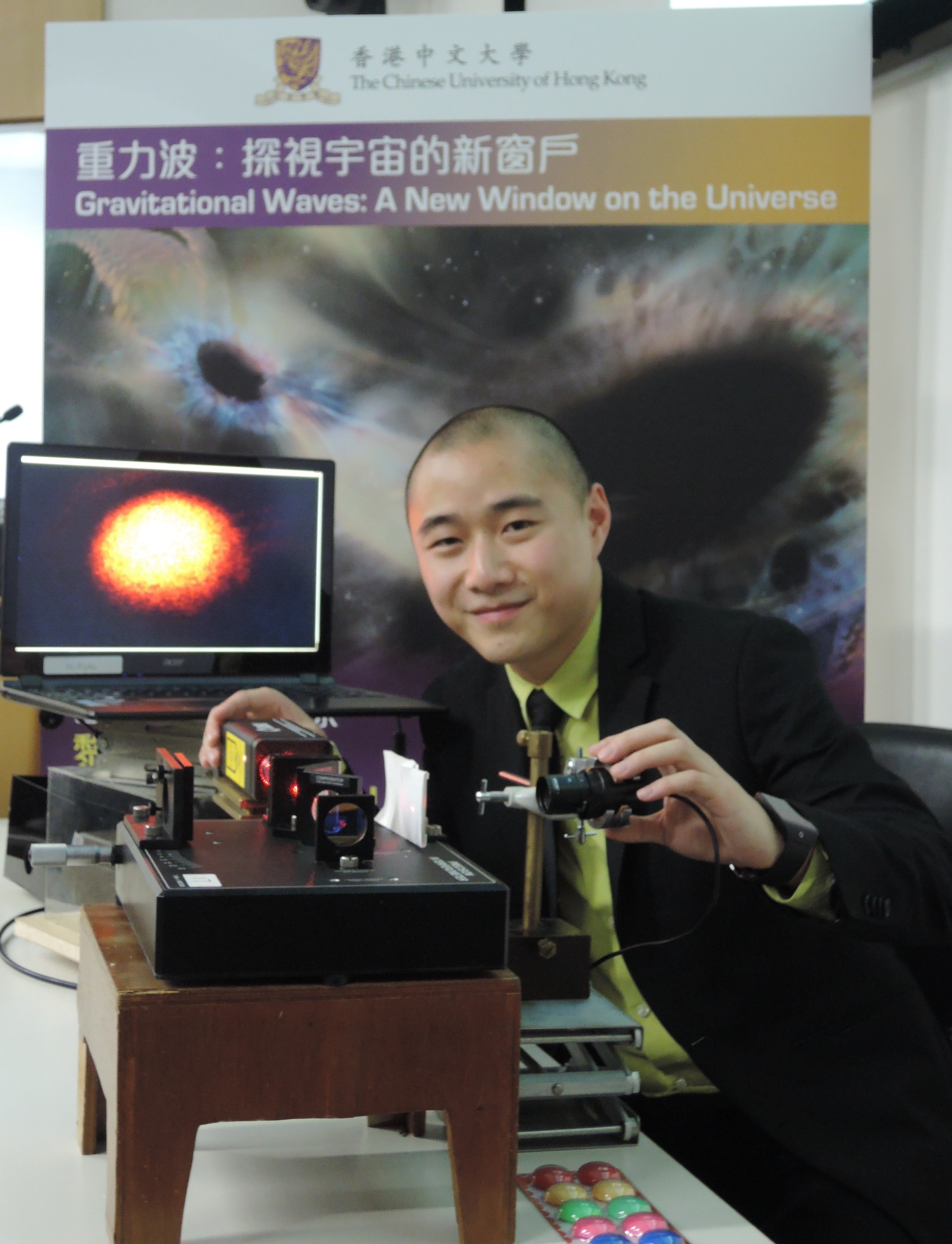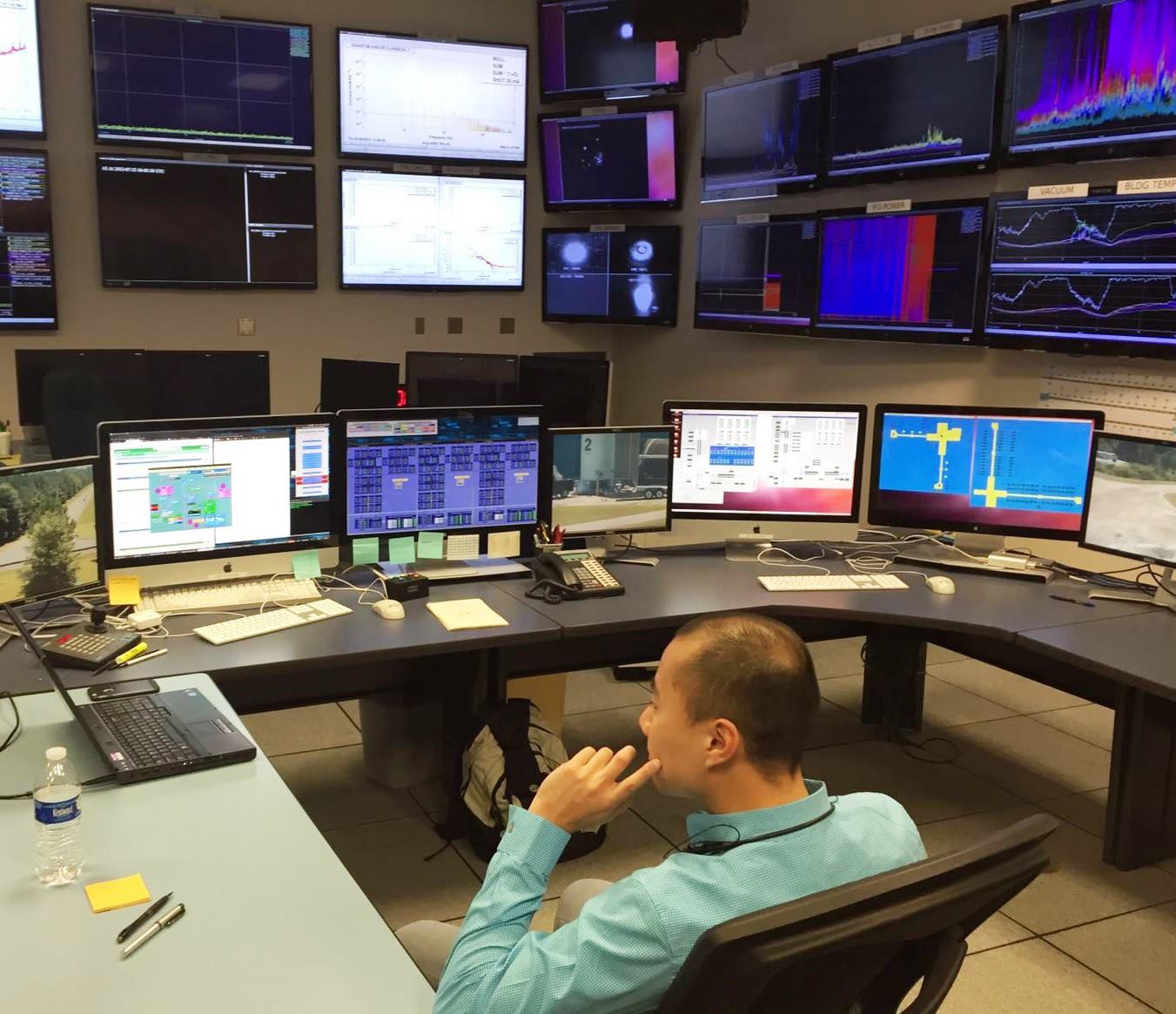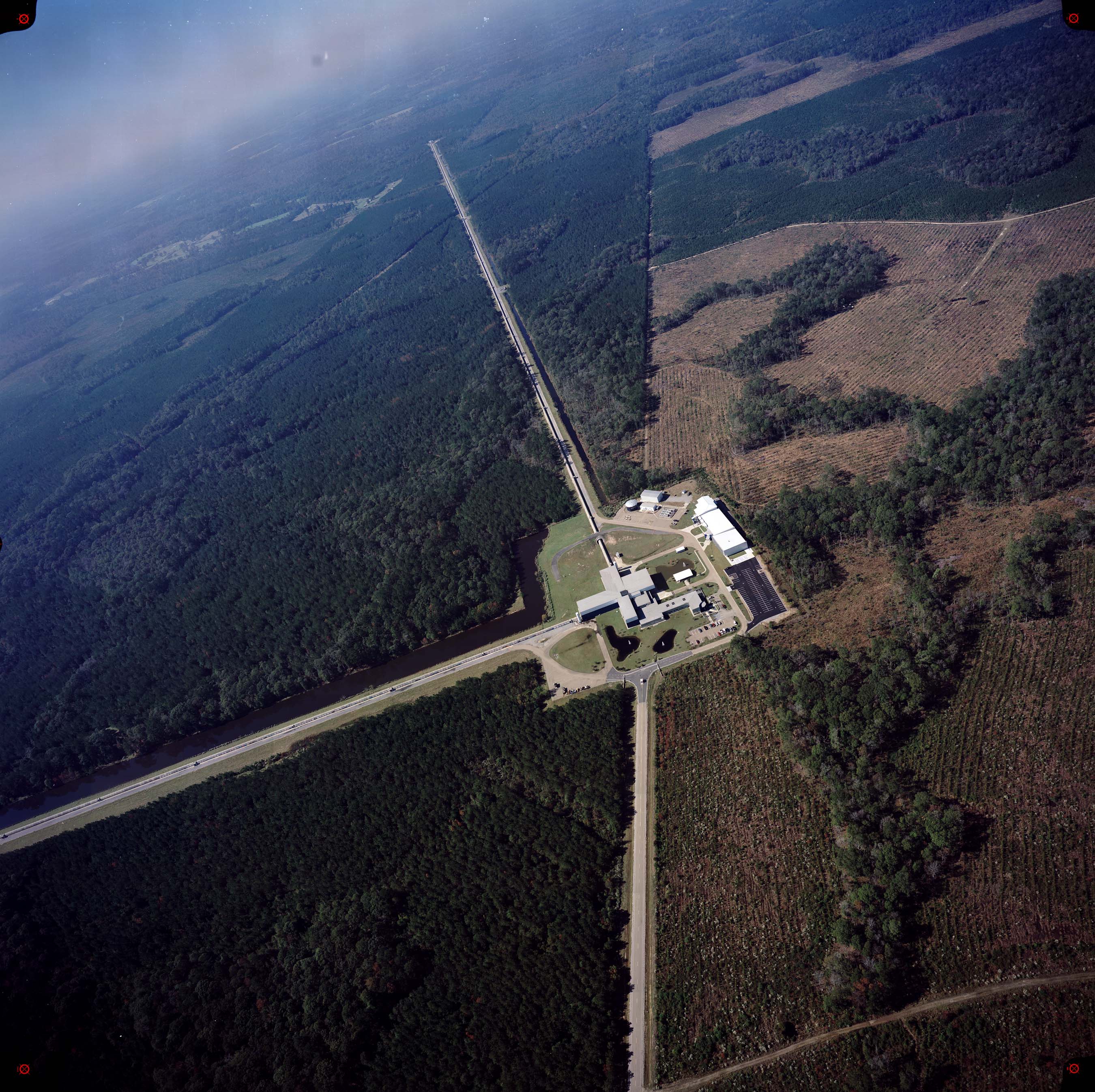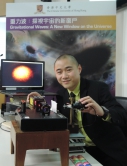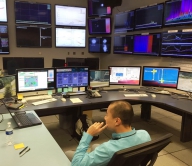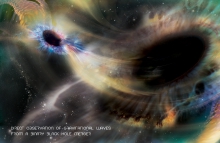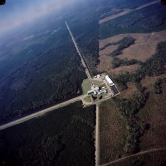CUHK
News Centre
A Second Gravitational Wave Event IdentifiedOpens Up New Horizons in Astronomy
The Laser Interferometer Gravitational-wave Observatory (LIGO) Scientific Collaboration and the Virgo Collaboration officially announced that gravitational waves were detected by both of its twin detectors for the second time. The Chinese University of Hong Kong (CUHK) has recently become a member of the LIGO Scientific Collaboration. Prof. Tjonnie G. F. LI, Research Assistant Professor, Department of Physics, CUHK, now leads the only group from a Hong Kong institution to be part of this endeavour.
The gravitational waves were detected on December 26, 2015 at 03:38 am (UTC) by both of the twin LIGO detectors, located in Livingston, Louisiana, and Hanford, Washington, USA. The discovery has been accepted for publication in the journal Physical Review Letters.
Based on the observed signals, LIGO scientists estimate that the two black holes for this event were 14 and 8 times the mass of the Sun. A single and more massive spinning black hole, which was 21 times the mass of the Sun, was produced during the final moments of the merger of the two black holes. The merger took place 1.4 billion years ago. A quantity of energy roughly equivalent to the mass of the Sun was converted into gravitational waves. The detected signal came from the last 27 orbits of the black holes before their merger. Based on the arrival time of the signals – the Livingston detector measuring the waves 1.1 milliseconds before the Hanford detector – the position of the source in the sky can be roughly determined.
The first detection of gravitational waves, which was announced on February 11, 2016, confirmed a major prediction of Albert Einstein’s 1915 general theory of relativity, and marked the beginning of the new field of gravitational-wave astronomy. The black holes found in the second discovery were much less massive than those observed in the first detection. Due to their lighter masses compared to the first detection, they spent more time—about one second—in the sensitive band of the detectors. This can help scientists to map the populations of black holes in the universe.
Prof. Tjonnie G. F. LI remarked, “I am happy that the detection of gravitational waves is not a once-in-a-lifetime occurrence, but instead is something that physicists can look forward to seeing frequently in the future. CUHK began a formal collaboration with the LIGO Scientific Collaboration in March this year. It provides us with more opportunities to conduct research on gravitational physics with a world-wide network of top scientists. I believe there will be more breakthrough discoveries down the road.”
About LIGO
LIGO was launched in 2001 with substantial funding from the US National Science Foundation to detect gravitational waves, and was conceived, built, and operated by Caltech and MIT. The LIGO Scientific Collaboration comprises more than 1,000 scientists from over 90 universities and research institutes worldwide to develop detector technology and analyse data. LIGO completed its major upgrade to Advanced LIGO in 2015 which greatly increases the sensitivity of the instruments, enabling a large increase in the volume of the universe probed—and the discovery of gravitational waves during its first observation run. (Please visit http://www.ligo.org/). The momentous discovery has already earned the LIGO team various prestigious scientific awards, including the ‘Special Breakthrough Prize in Fundamental Physics’, the ‘2016 Gruber Foundation Cosmology Prize’ and ‘The Shaw Prize in Astronomy 2016’.
CUHK Becomes the First Hong Kong Member of LIGO
CUHK has recently signed a memorandum of understanding to become the first Hong Kong member of the LIGO Scientific Collaboration. By becoming a member of LIGO, CUHK can have access to the data from the LIGO detectors and its sister experiment, the Virgo Collaboration. Researchers at CUHK will be able to exchange knowledge with various member institutes of the collaborations. CUHK will also send members to the detectors for training and operations.
Gravitational Waves from a binary black hole merger. (Photo credit: Aurore Simonnet, E/PO Sonoma State University)


